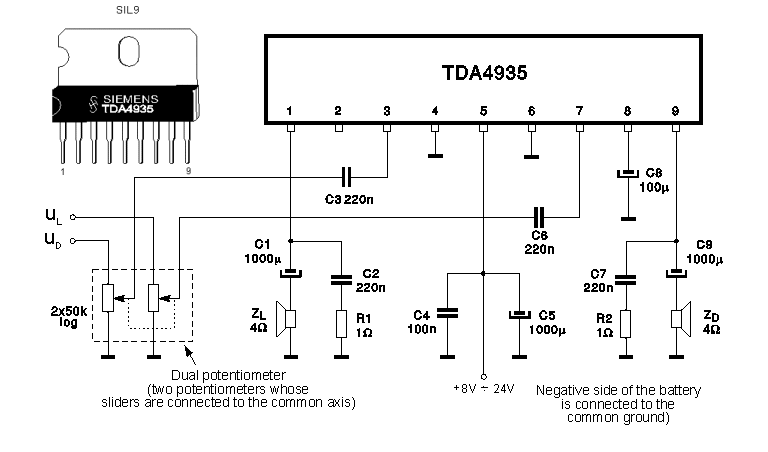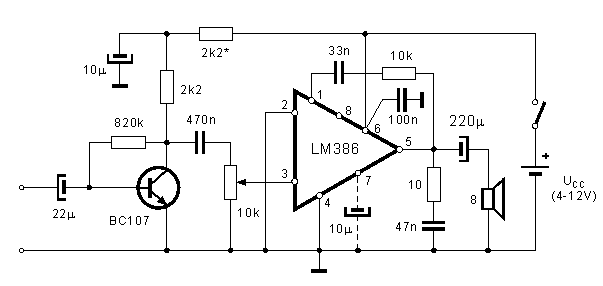

Diagram 7.6 shows a circuit for a stereo audio-amp using a TDA4935 IC. It is a modern integrated circuit with two separate pre-amps and stereo outputs.
Left and right input signals are marked UL and UD, which are brought to two inputs of the amplifier. The chip also has built-in heat and overload protection. Maximum output for each amplifier is 15W, so they can be used in stereo mode of 2x15W amplifiers.
 Fig. 7.6: Stereo audio-amplifier using the TDA4935
Fig. 7.6: Stereo audio-amplifier using the TDA4935
Another example is an audio amplifier using an LM386 circuit, with a preamp using a BC107 transistor. The series connected capacitor and resistor between pins 1 and 5 produces low frequency amplification (around 100Hz) improving the characteristics of the circuit. This amplifier could be used with any low frequency source (gramophone, microphone, etc.).
 Fig. 7.7: complete audio-amplifier using the LM386
Fig. 7.7: complete audio-amplifier using the LM386
The third example is a simple alarm, shown in figure 7.8. It uses a CD4011 IC. Gates NI3 and NI4 form a 600Hz audio oscillator. This signal is amplified using an NPN transistor and passed to an 8R speaker. To hear the 600Hz tone, remove the connection to pin 8 and connect pin 8 to pin 9. This produces a constant tone. Gates NI1 and NI2 form a 4Hz oscillator, whose output is connected to pin 8. This turns the 600Hz tone on and off at 4Hz. To use this alarm in your home, on doors for example, connected pin 1 to 7 via a switch.
 Fig. 7.8: Alarm using a CD4011 IC
Fig. 7.8: Alarm using a CD4011 IC
The last circuit in this chapter is an example of a mono FM receiver using a TDA7088T IC, which can be, along with the SMD components, housed in a match-box along with two miniature watch batteries. You can purchase a ready-built scanning radio in a "junk shop" for as little as $5.00 with stereo head-phones Always look in the toy sections of large stores for the latest technology at the cheapest price.
 Fig. 7.9: Mono FM radio receiver with an electronic preset
Fig. 7.9: Mono FM radio receiver with an electronic preset
Tuning to a low frequency station is done automatically by pressing the RUN button. This turns on the part of the integrated circuit which is designated for scanning over a given range. When it finds a station it locks on until the RUN button is pressed again. When it reaches 108MHz it waits for the RESET signal which returns the scan to 88MHz.